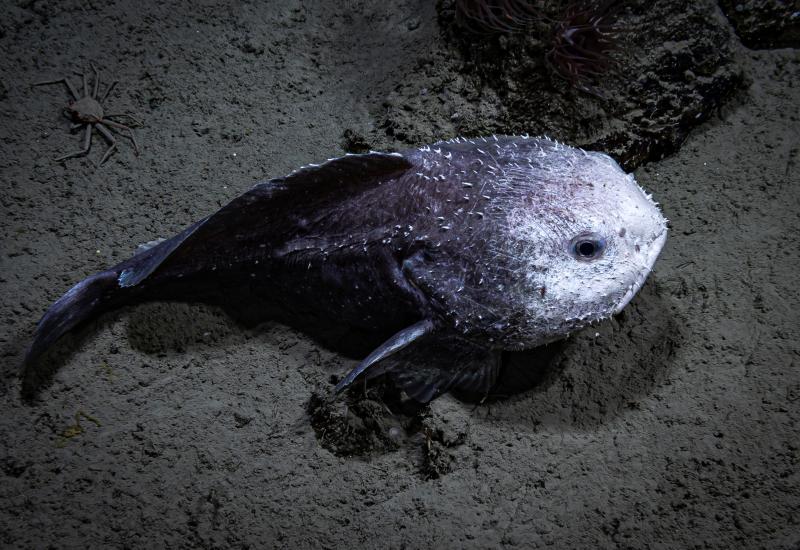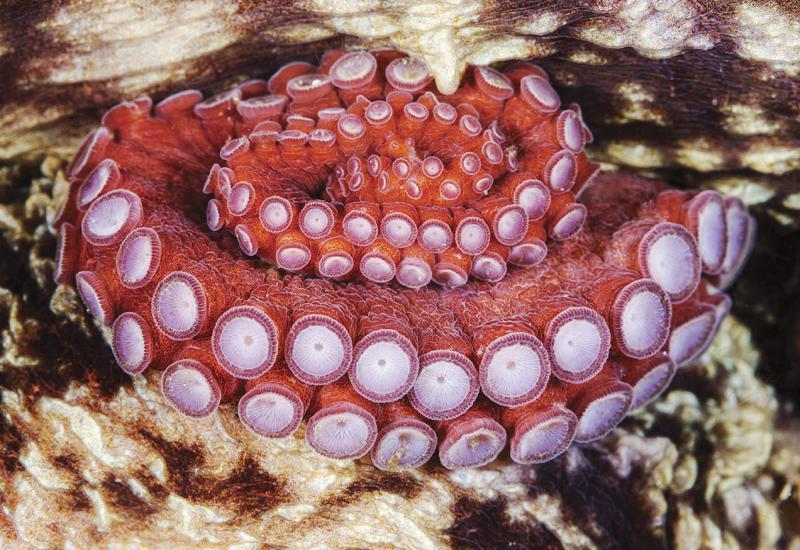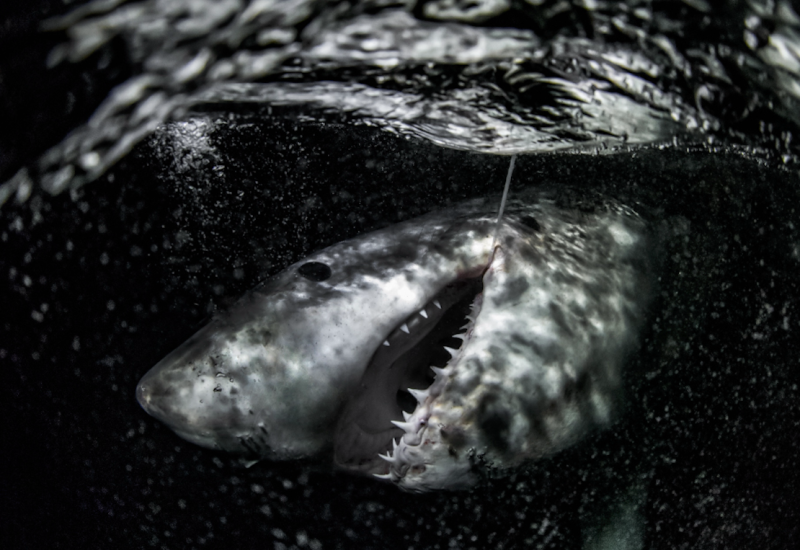A Spotlight on Manatees — The Original Mermaids
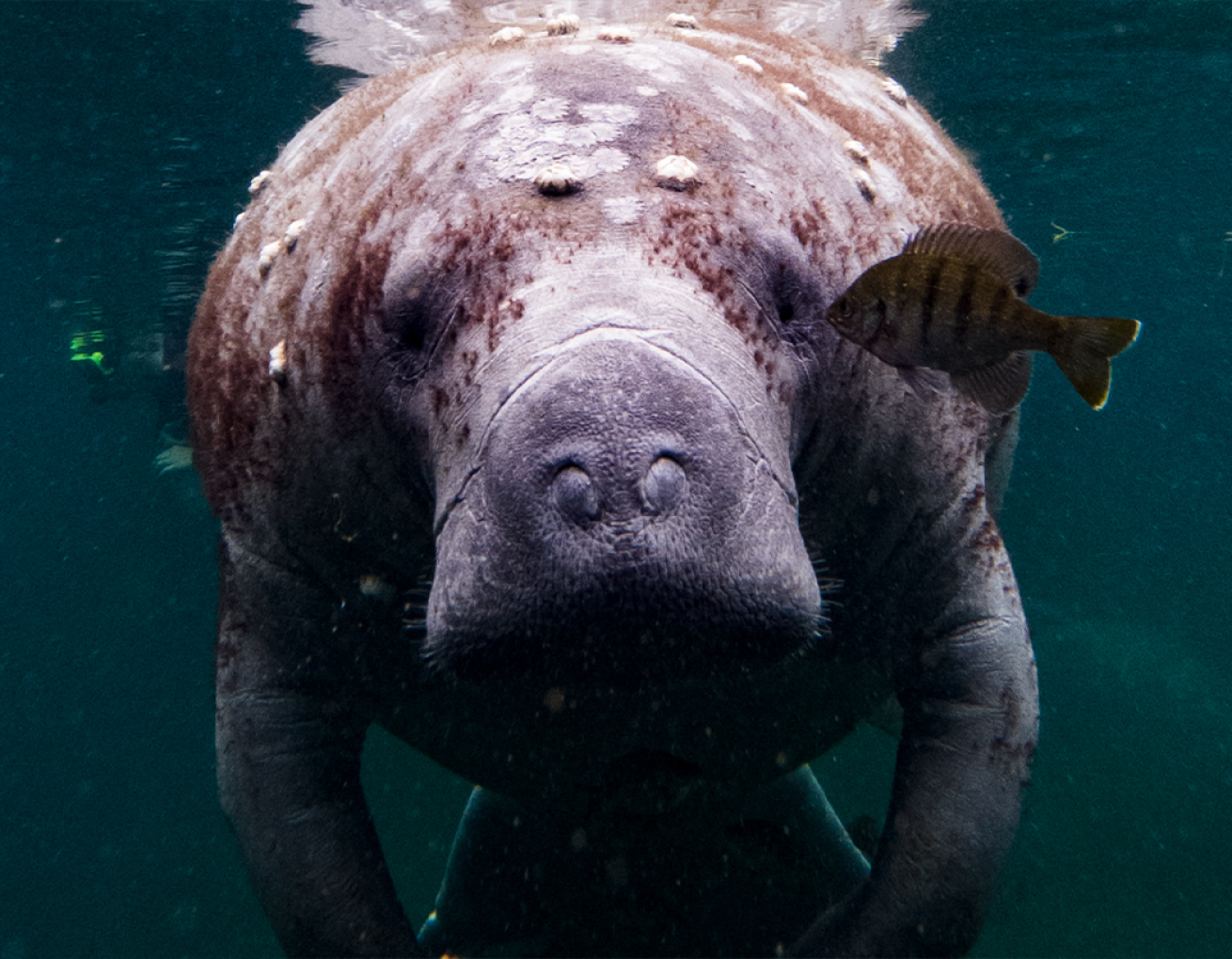
Tiffany Duong/Ocean RebelsManatees were once the inspiration for myths and legends about mermaids.
Was it a mermaid – or just a manatee?
Tales of mermaids and men have enthralled us for centuries. Half-women, half-fish creatures are the characters of fairytales, myths and legends. Mermaids are also the focus of Disney’s latest live-action movie, a remake of the classic The Little Mermaid, which premiered May 26. But, what actually inspired the sailors and storytellers of old to imagine these water spirits? The mystery of manatees and mermaids is historic and enchanting. “Centuries ago manatees were mistaken for mermaids,” The Smithsonian.) reported. “The confusion may seem absurd now, but back then little was known of the sea beasts that lived in the ocean…” so stories of krakens, sirens and other sea monsters helped man understand life below the surface.
“The mystery of the unknown coupled with some of the manatee’s humanlike features – its ability to turn its head, the fingerlike bones in its forelimbs, its flat tail – possibly led sailors to mistake it for the mythical creature, especially from a distance,” Smithsonian reported.
The association – and the allure – have continued, even into the modern day. In many modern languages, the word for mermaid is a form of “siren,” which is often portrayed as a seductive and dangerous mermaid. Even the name for the scientific order that manatees and dugongs belong to is Sirenia. And yet, while mermaids and sirens have fascinated us for centuries, our neglect of their real-life counterparts may be steering these gentle giants toward extinction.
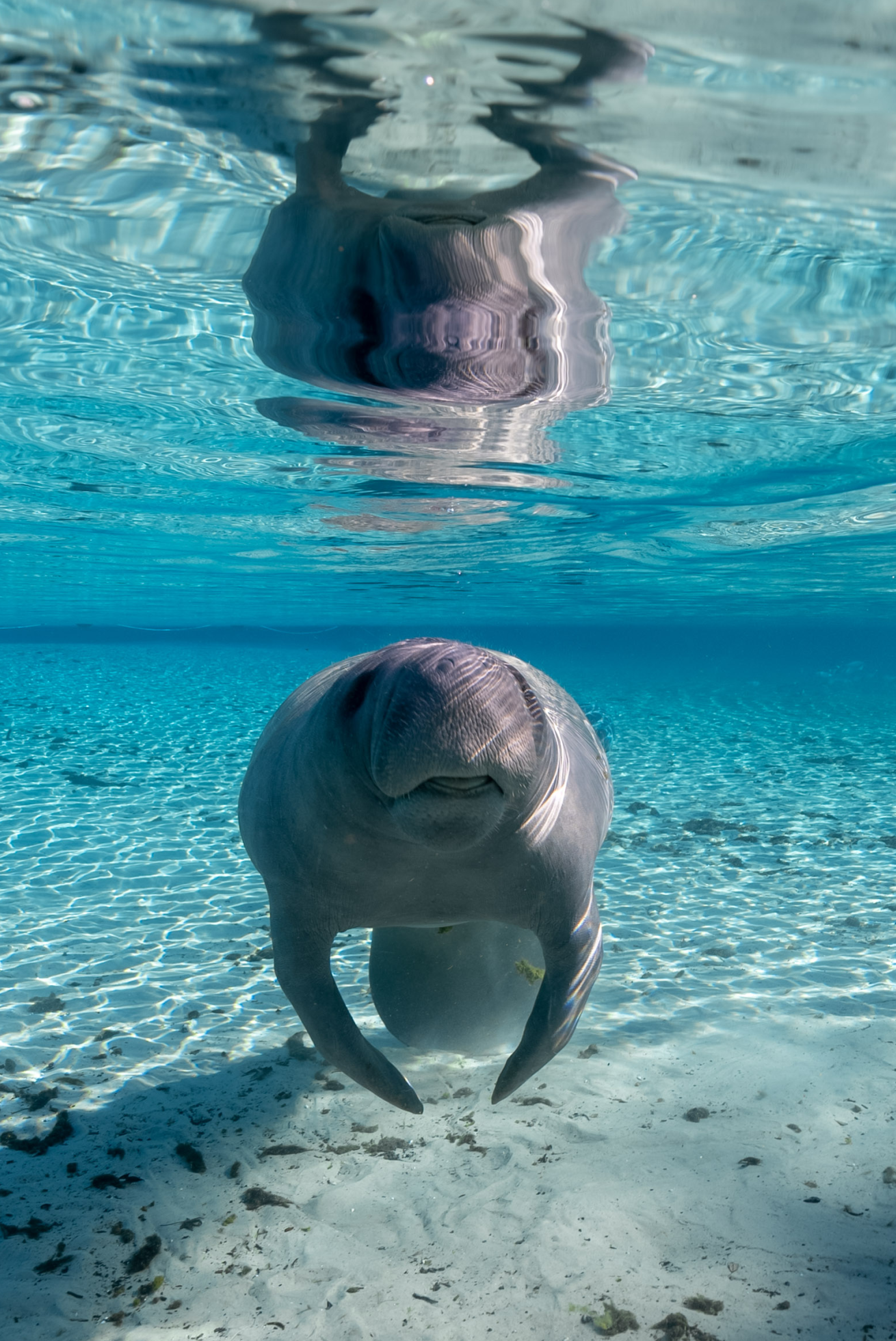
Kristin PaterakisManatees head to the relatively warm freshwater springs during wintertime in Florida.
What is a manatee?
Manatees are large, fully aquatic marine animals. Despite being called “sea cows,” they’re most closely related to elephants! Both have thick skin and three to four toenails. Plus, a manatee’s snout is like a shrunken “trunk,” and the former uses prehensile lips to grab and pull food into its mouth in a very similar way.
Because they’re mammals, they must surface to breathe air – on average every three to five minutes. When they expend lots of energy, they may surface to breathe as often as every 30 seconds. In contrast, they can rest on the seafloor for up to 30 minutes.
They’re slow-moving, spending most of their time eating, resting or migrating to stay in warmer waters. Manatees can be found in shallow, slow-moving rivers, estuaries, saltwater bays, canals and other coastal areas rich in vegetation.
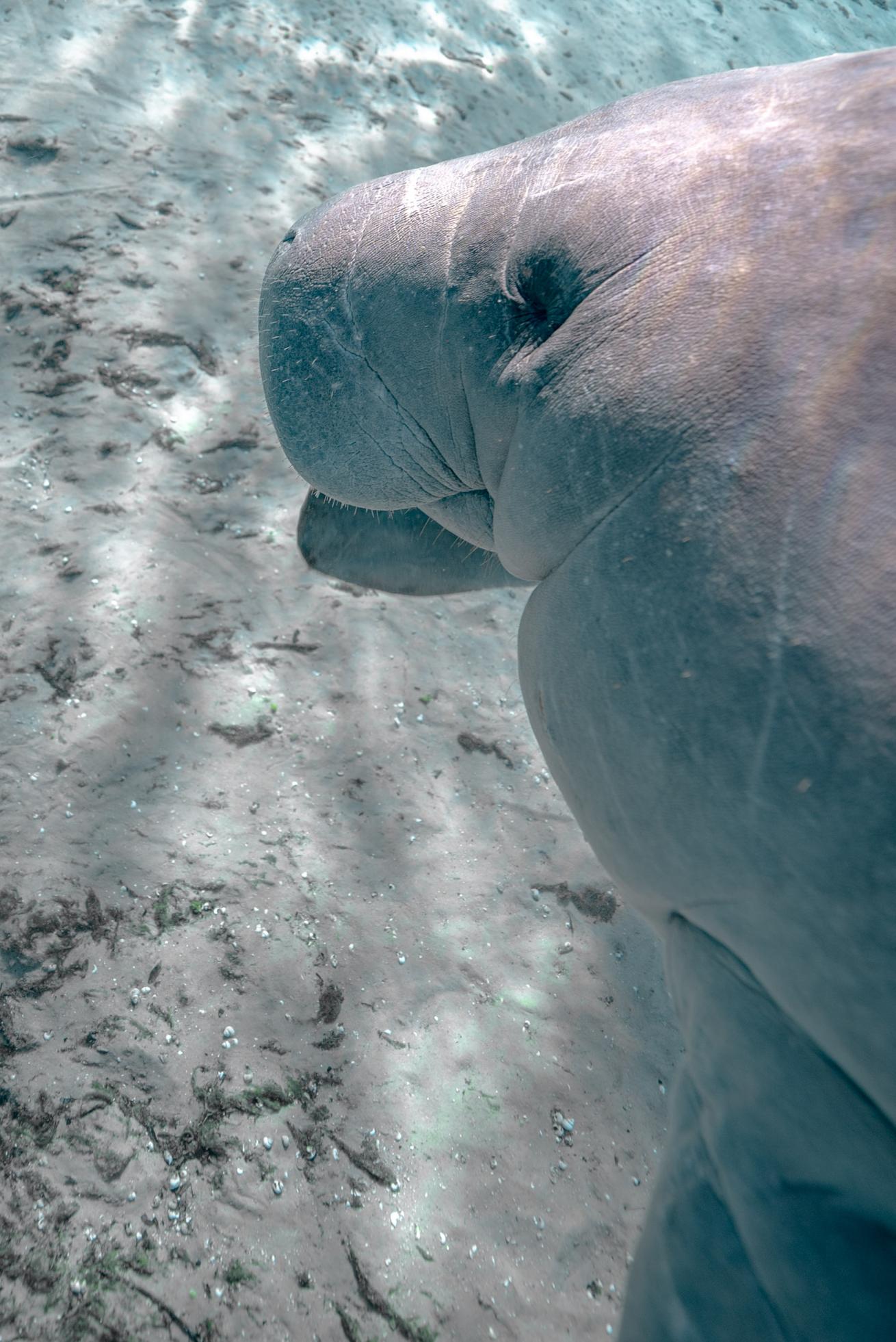
Kristin PaterakisManatees are loved by many for their chunky rolls.
Who you calling chubby?
While they’re lovingly called “chubby mermaids” and “floaty potatoes,” manatees aren’t “fat.” Despite their shape and size – which can measure almost 14 feet long and up to 3,000 pounds – they don’t have much blubber to keep them warm. Their body mass is mostly stomach and intestines. That’s why they migrate to warmer waters.
Related Reading: Real Life Mermaids or Manatees and Dugongs?
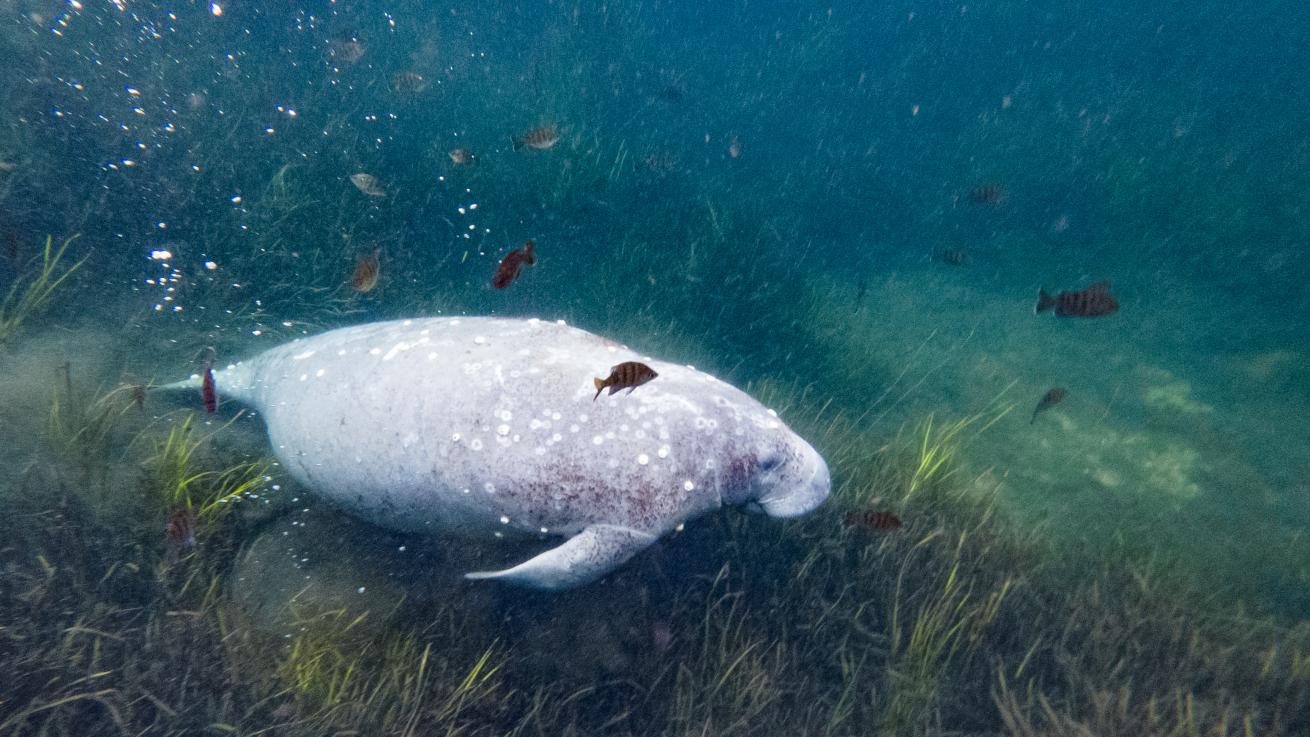
Tiffany Duong/Ocean RebelsManatees are marine herbivores that eat seagrasses and other aquatic plants.
What do manatees eat?
To stay warm and energized, they do consume a lot, spending most waking hours eating seagrasses and other aquatic plants. In fact, as the ocean’s largest herbivores, they need to consume 5-10% of their body weight in greens each day. They’re adapted to eat vegetation from fresh, brackish and saltwater environments. According to NOAA, this regular grazing actually helps to maintain the health of seagrass beds.
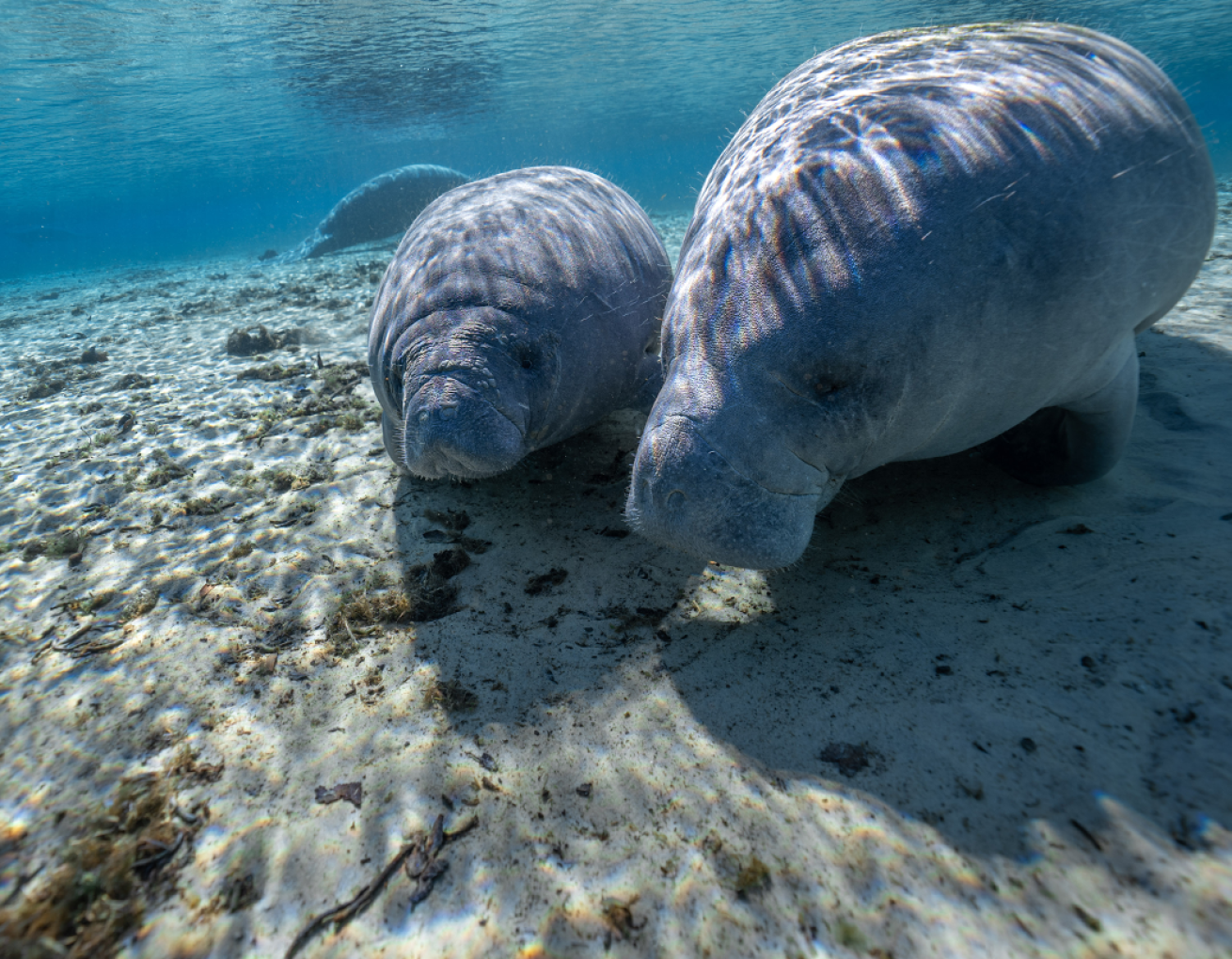
Kristin PaterakisBaby manatees are around 4-4.5 feet long when born and between 60-70 pounds.
How long do manatees live?
Most manatees can live to 30 to 40 years old. The oldest known manatee, a captive individual named Snooty, lived to be 69. Female manatees stay pregnant for a whole year. Then, calves stay with their mothers to nurse for up to two years. Female manatees calve every two to five years, and this low reproductive rate helps explain some of why they’re endangered.
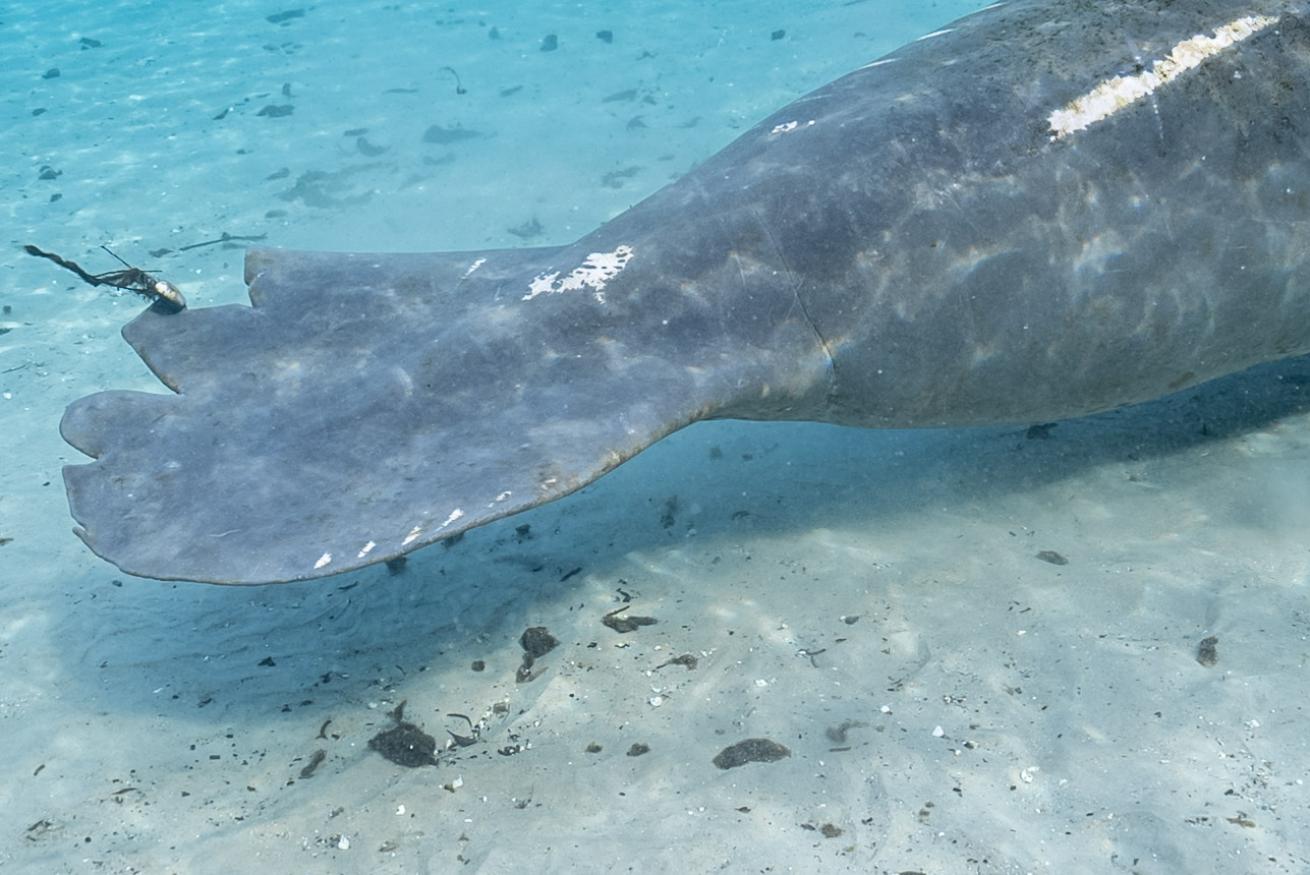
Kristin PaterakisManatees are listed as threatened with extinction, in part from human interaction like boat strikes and fishing entanglement seen on this manatee.
Why are they in danger?
Manatees are threatened because we’ve become part of their world. They’re gentle giants with no natural predators, but humans pose a genuine threat to their well-being. Currently, all three species of manatees are listed as threatened with extinction.
Manatees are very large and slow-paced, making them easy targets for unintentional injury and fatalities from fishing nets or boat strikes. Boat collisions, propeller injuries, habitat loss and fragmentation are their leading causes of harm.
Related Reading: Spike in Florida Manatee Deaths Draws Federal Government Scrutiny
In addition, poor water quality has killed off seagrasses, manatees’ favorite food and triggered toxic algae blooms. As a result, there has been a record number of manatee starvations and die-offs, especially in recent years in Florida.
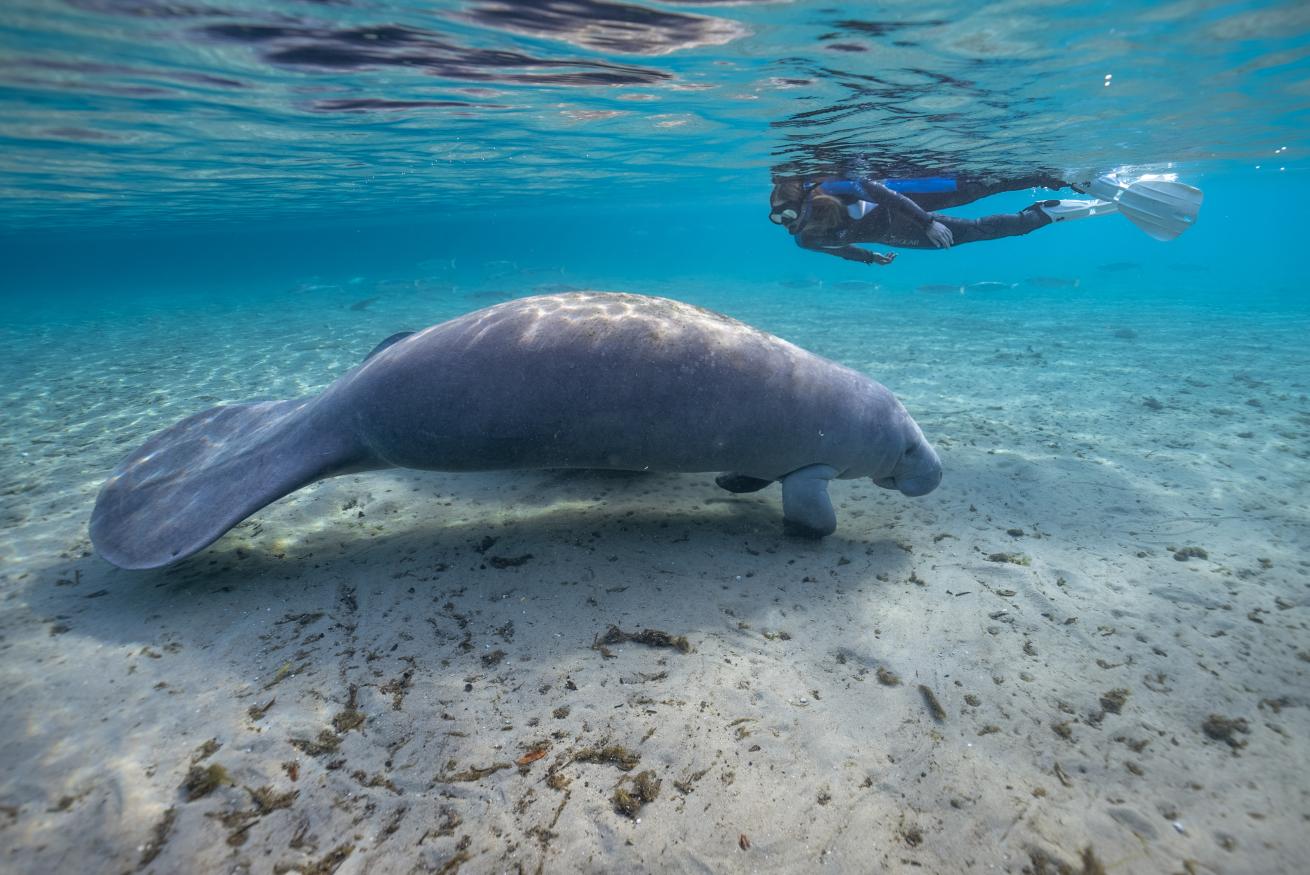
Kristin PaterakisA snorkeler observes as a manatee swims by in a crystal clear freshwater spring in Florida. It is important to let manatees approach you and not dive down to swim with them.
What can we do?
Protections are in place in many manatee habitats to help this lovable louse coexist with humans. Boat speed reductions and off-limits manatee protection zones in key habitats have helped. As individuals, we should obey guidelines when boating, swimming with and viewing manatees. Preserving water quality and habitat also is crucial. Reducing pollution and chemical runoff from agriculture and lawns is also vital.

